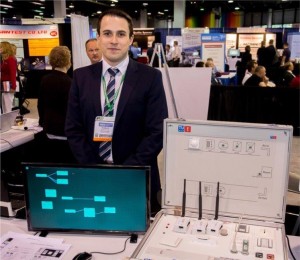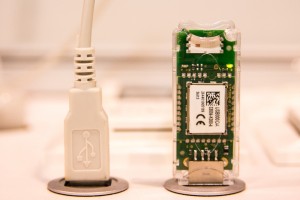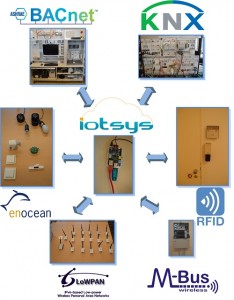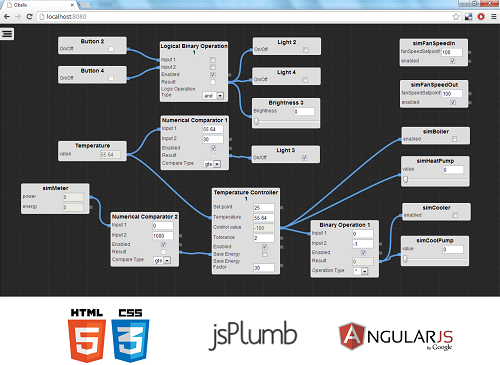 IoTSyS – Control Logic Editor
IoTSyS – Control Logic Editor
Contestants: Markus Jung, Jürgen Weidinger
Affiliation: Automation Systems Group, Vienna University of Technology
Semi-Finalist
Contact Information: mjung@auto.tuwien.ac.at
www.iotsys.org
Summary
The IoTSyS control logic editor provides a means for connecting both IP and non-IP based objects through an easy-to-use HTML5 interface running on top of a Java-based middleware layer. IPv6 smart objects, non-IP based automation devices and web-based information can all be quite simply interconnected graphically to implement a powerful control system. A group communication mechanism based on IPv6 multicasting allows gateway-free peer-to-peer interaction between IPv6 smart objects.
How does “IoTSyS – Control Logic Editor” use Internet Technology?
IoTSyS relies on Internet technology as the common interoperability layer across existing home and building automation technologies and upcoming Smart Objects that natively support IP communication. Relying on a group communication mechanism that can only be realized with the multicasting features of IPv6, Internet technology is the most important building block of IoTSyS. The easy to use control logic editor relies on this interaction mechanism and allows for graphically Smart Objects, control logic blocks and legacy device objects to work together. For each communication relationship, a dedicated transient IPv6 multicast address is assigned.

Why did you choose to invent IoTSyS? What problem do you see that it can solve?
IoTSyS acts as integration middleware for the Internet of Things and solves, on the one hand, the problem of how to integrate existing heterogeneous home and building automation technologies in the Internet of Things and, on the other hand, provides a communication stack for Smart Objects that relies on IPv6, CoAP and OASIS Open Building Information Exchange. It assembles existing open and royalty free standards together to provide true interoperability between existing devices and new Smart Objects. Further, it provides an easy to use, graphic control logic editor by which the installation of expensive control logic engineering software and tedious installation processes can be avoided. Finally, it addresses the problem where most existing Internet of Things solutions and appliances stop working if the gateway or the Internet becomes unavailable. IoTSyS solves this problem by providing a peer-to-peer interaction style by relying on IPv6 multicasting for group communication.

What is the practical application of IoTSyS for the everyday user?
An everyday user can automate his home and connect existing appliances with new Smart Objects and Internet information sources. The graphic user interface provides the user with a convenient way to create and customize a smart home based on the Internet of Things.
Are there plans to produce IoTSyS for the marketplace, or is it already a product that can be purchased/obtained?
IoTSyS is a research prototype that is published as an open source project in order to allow it to continue to evolve. There are plans to provide additional commercial services, but the gateway and the communication stack will always remain open source.

Why would you consider IoTSyS to be “innovative”?
The most innovative parts of IoTSyS are the peer-to-peer interaction based on IPv6, CoAP and OBIX, as well as the HTML5 based control logic editor that allows users to graphically wire objects together and create powerful control logic scenarios without needing to use expensive and tedious-to-install rich client applications.
What would you like to see in the future for the Internet of Things? Why should more companies utilize IP?
I would like to see that companies begin to rely on open and royalty free standards for designing the communication interfaces for their appliances. Further, it would be nice to see more companies deciding to make their software or systems open source, in order to easily accelerate the successful deployment of a complete Internet of Things. IP, and especially IPv6, is an essential building block for interoperability between new Internet of Things appliances, but the upper layer of the communication stack also needs to rely on open and standardized technologies.
